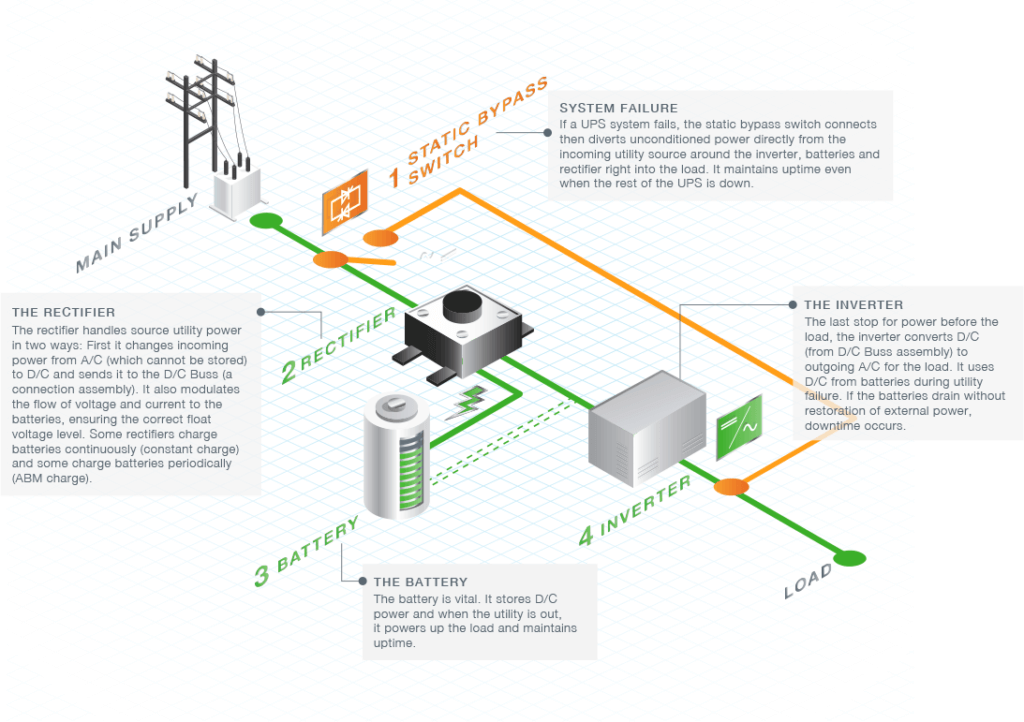Eliminate Surprises with Proactive Uninterruptible Power Supply Battery Replacement

Battery failure is responsible for most instances of uninterruptible power supply (UPS) equipment downtime. These outages are largely predictable and preventable with the proper battery environment, proactive uninterruptible power supply battery replacement, and ongoing monitoring.
What’s your UPS battery type?
UPS systems can be powered by different types of batteries and each one has unique maintenance requirements. Flooded or wet cell (FLA) batteries are the oldest battery technology. FLA batteries require periodic filling with distilled water and stringent monitoring of water levels. They have the longest life (20 years) but have greater upfront costs and require a separate battery room for safety. Valve-regulated, lead-acid (VRLA) batteries are most commonly used in UPS systems today. These batteries automatically vent the gasses that are a by-product of their electrochemistry, which makes them safer than FLA batteries. VRLA batteries require less upkeep and cost less than FLA batteries, but usually last only about 5 years.
Location. Location. Location.
There are a few things to know about ensuring the right environment for these critical pieces of UPS equipment. FLA batteries require a separate room for optimal safety. All batteries require a clean, controlled, stable environment: We recommend 68° – 77° F. Too much fluctuation in temperature can reduce battery life, and excessive heat can be catastrophic. In addition to temperature, cleanliness is important. The area around a battery or battery string should be clean and well-ventilated to prevent dust and heat accumulation.
Get proactive
Ensure that FLA and VRLA batteries receive proactive maintenance. Undercharged VRLA or FLA batteries form sulfate crystals on the plates, which eventually reduce capacity. On the other end of the spectrum, overcharging causes hydrogen and oxygen buildup, leading to dry-out and possible thermal runaway (when the battery cell generates more heat than it can dissipate, leading to an explosion). Your maintenance provider will also ensure that connections are solid and casings intact. Loose terminal or inter-cell connections decrease battery lifespan. Cracked or otherwise damaged casings can lead to internal dry-out and failure. A proactive maintenance plan reviews all these checkpoints regularly.
Secure remote monitoring
Regular proactive maintenance can mitigate many battery problems; however, only constant monitoring can protect against catastrophic battery failure. Site Sentry™ provides around-the-clock secure monitoring of load status, temperature, input and output voltages, and remaining FLA and VRLA battery capacity. The platform delivers this information in a streamlined, intuitive interface. We also coordinate service for in-depth battery string monitoring.
Want to learn more about getting the most for your UPS battery budget? Get in touch.
